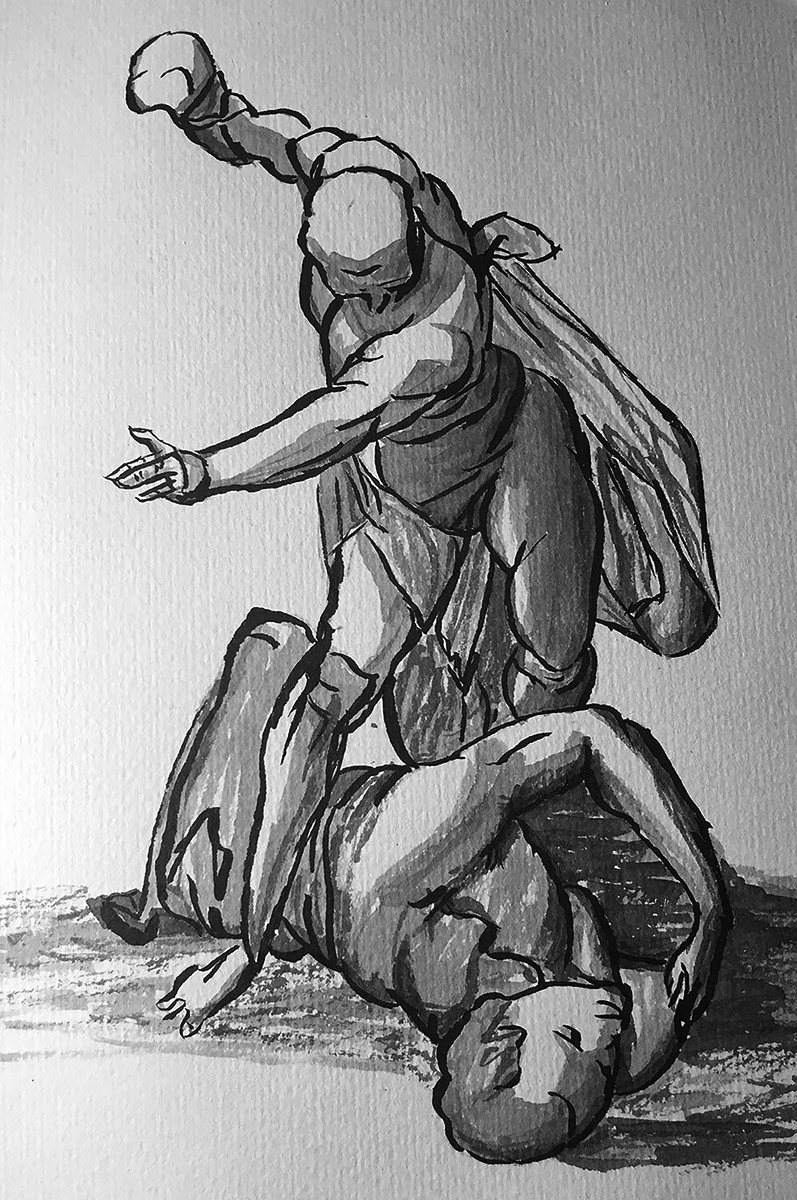
Next up we have a copy of a drawing of Cain and Abel by Luca Cambiaso. The original was done in pen and wash. I made my copy with India Ink on watercolor paper. Right now you are probably wondering just who is this Luca Cambiaso person. Let us consult the Italian Art Society which sounds like an organization that should know what they are talking about.
Luca Cambiaso was born in Genoa, Italy on November 18, 1527. He was a top artist in Genoa during the middle and late 16th century and ran a big and productive workshop. In his childhood, he learned to paint with his father, Giovanni Cambiaso. Luca created his first works when he was only fifteen years old. At the age of seventeen, he began working with his father on the Palazzo Doria’s decoration. Additionally, Luca assisted Il Bergamasco with decorations for the church of San Matteo. Luca partnered with Giovanni Battista Castello on several projects in the 1550s. During 1560, Cambiaso completed frescoes for the Palazzo Imperiale in Campetto, Genoa, which brought him notoriety and additional commissions. FYI: Palazzo Imperiale means Imperial Palazzo in Italian. Cambiaso was asked to work for Philip II of Spain in 1583 and you don’t say no to Philip II. San Lorenzo’s church at the Hieronymite monastery of the Escorial was his first commission.
You don’t say no to Philip II
He studied Raphael and Michelangelo’s methods, and he was open to learning new ones. Luca was also impacted by the works of Titian and Veronese. In the mid-1560s, he developed a draughtsman style that incorporates geometric forms. By the 1570s, Luca’s works began to be more reflective, which he continued to develop during the rest of his career. He influenced a lot of painters, who analyzed his frescoes in Genoa. His followers became known as the Genoese School. Luca died in Madrid on September 8, 1585.
